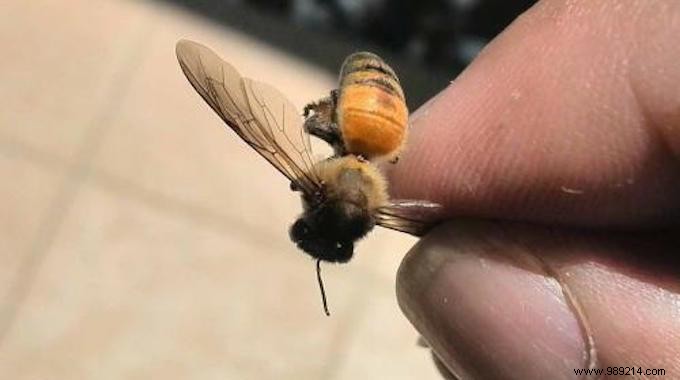
Bees are dying by the millions, with ever-increasing mortality rates 'to augment.
Gradually, governments around the world recognize that one of the most used pesticides in the world is largely responsible for the disappearance of bees.
This is now also the case in the United States.
For more than 10 years, the United States Environmental Protection Agency (EPA) had been under significant pressure from environmentalists and beekeepers to re-evaluate the authorization for the use of neonicotinoids.
Indeed, a significant body of research indicates that this class of insecticide progressively kills bees and other pollinators.
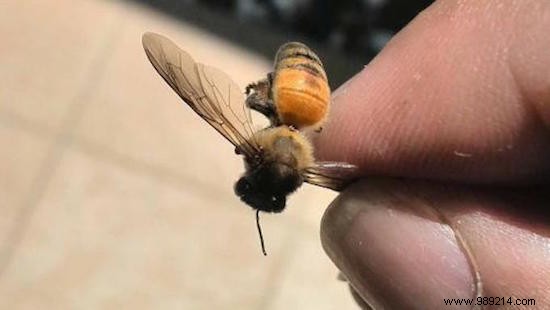
A decision awaited for 20 years
In a report released in January, the EPA basically acknowledged the facts.
Marketed by 2 European agrochemical giants, Syngenta and Bayer, neonicotinoids are quite simply the most widely used insecticides in the world.
It was in 2009 that the EPA began a long process of reviewing these toxic products.
Meanwhile, each year, tens of millions of hectares of crops are treated with neonicotinoids, with devastating effects on the health of hives and bees.
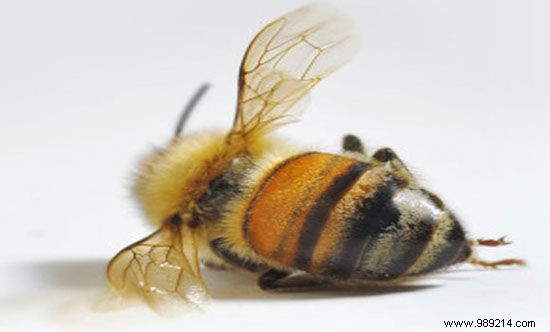
The EPA's long-awaited re-evaluation focused on imidacloprid, one of the most widely used neonicotinoids, manufactured by Bayer.
More specifically, the EPA has finally taken a look at how imidacloprid affects bee health.
The conclusion of this reassessment is alarming. So alarming that the EPA does not rule out "limiting or completely banning" the use of this toxic product by the end of the year.
EPA's risk assessment team reviewed dozens of studies conducted by both independent and industry-funded researchers.
It concluded that the use of imidacloprid is harmful to bees because of its concentration which exceeds 25 ppb (parts per billion). A concentration that is very commonly found in crops treated with neonicotinoids.
According to an EPA press release:“We have seen fewer and fewer pollinators as well as a drop in honey production. »
The crops that affect bees the most are cotton and citrus crops. As you can see from the table below published by the United States Geological Survey (the USGS), the cultivation of cotton contains a significant concentration of imidacloprid.
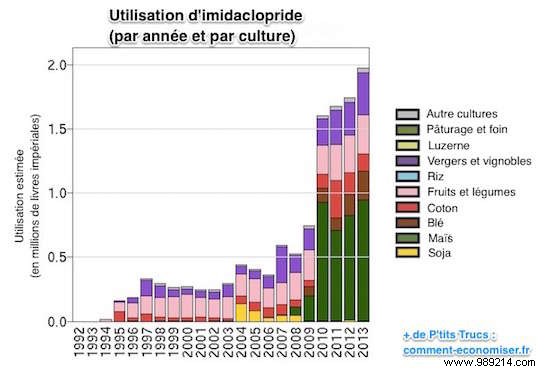
But that's not the worst. Soy is by far the crop in which the greatest amount of imidacloprid is used. Unfortunately, not all the consequences for bees are known yet, as little information is available on this subject.
Indeed, the EPA does not yet know the quantities of pesticides present in soy pollen and nectar. But we already know that the doses are very high and that bees are potentially exposed to dangerous levels of imidacloprid.
Strange that the EPA still doesn't know more about this subject when we know that the use of imidacloprid has been approved by the EPA since the 90s!
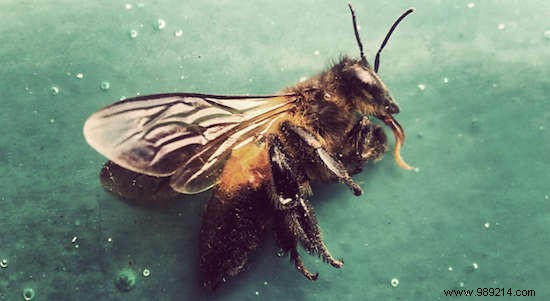
EPA has yet to receive and consider public comments on the re-evaluation it just released.
Furthermore, the Agency must also carry out an assessment of the effects of imidacloprid on other species. Indeed, according to the latest studies, neonicotinoids can also have a harmful effect on birds, butterflies and aquatic invertebrates.
In the meantime, several beekeepers and environmental associations have recently filed a complaint against the US Environmental Protection Agency. They point out that the EPA has never done a proper evaluation of the use of neonicotinoids which is very developed.
By discovering this information, we can only advise you to consume as many organic products as possible to protect your family from pesticides used in crops. Because if bees are affected, we don't see why humans wouldn't be too...
To provide you with organic products, we recommend the Biocoop chain, which respects a very strict charter on which all of its activities are based.
To learn more about the subject if you are interested, we refer you to this book by Stéphane Foucart:And the world became silent.